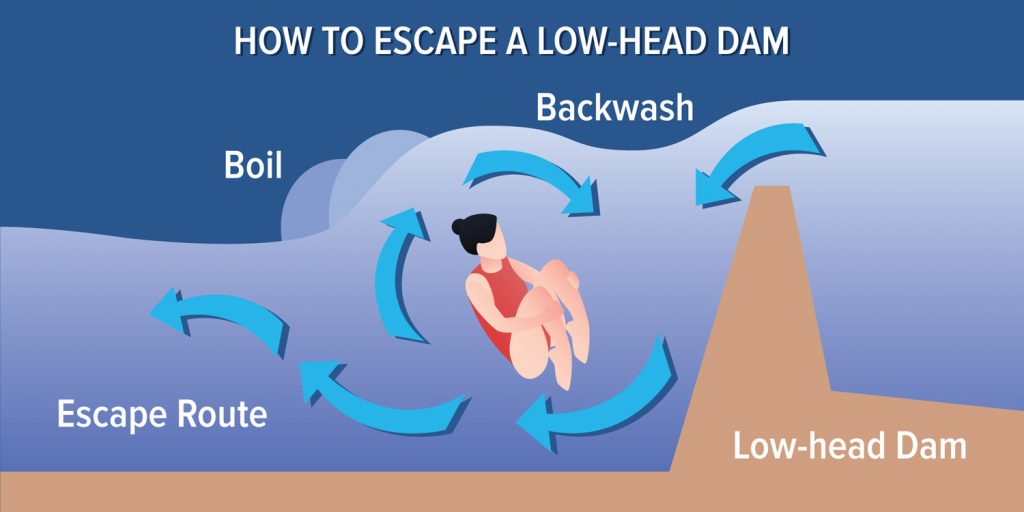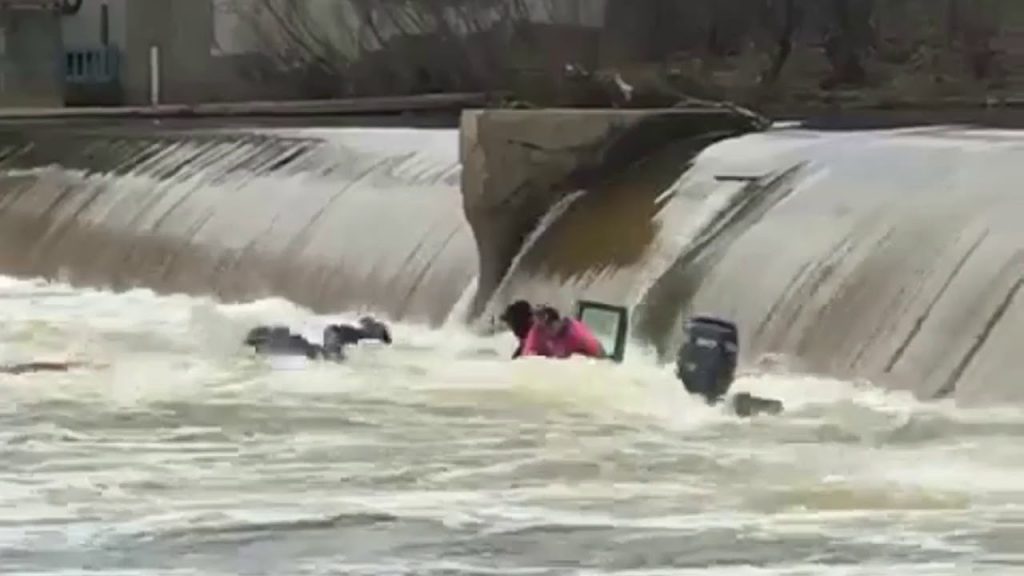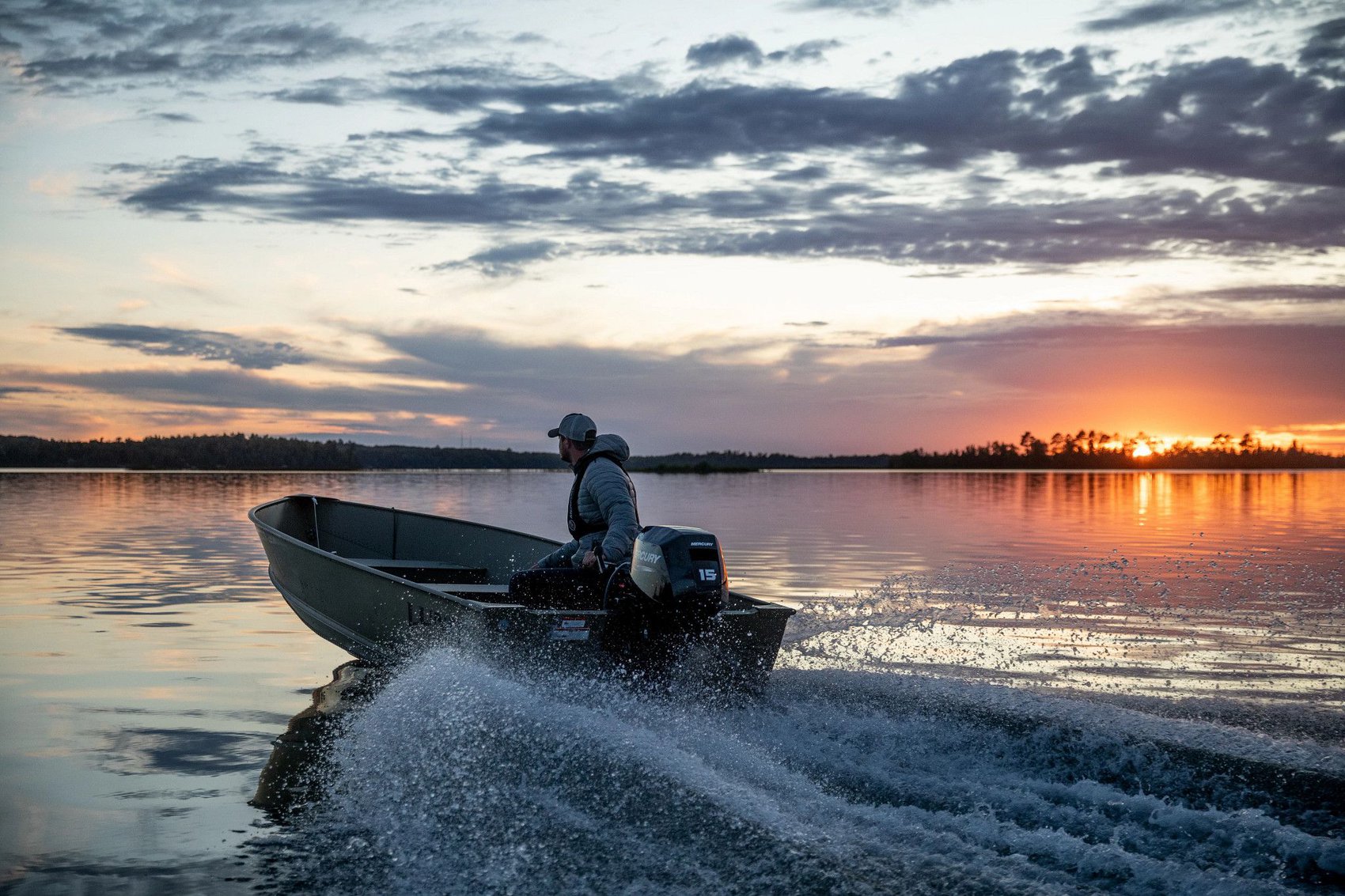Low Head Dam Dangers: Essential Safety Measures and Awareness
Low head dams are structures built across rivers or streams, designed for water to flow continuously over their crest from one bank to another. They serve several purposes such as providing a reliable water surface elevation upstream for diversion or controlling streambed incision. Commonly made from concrete, low head dams raise the water level upstream on a river, and are also known as diversion dams or grade control structures.
Despite their usefulness in water management, low-head dams are not without risks. These dams can create hazardous conditions for unsuspecting swimmers or boaters who may get trapped in the undertow, leading to accidents or even fatalities. In recent years, engineers have been working to reduce drowning risks associated with these structures through innovative design and increased public awareness.

Key Takeaways
- Low-head dams are structures built in rivers or streams, allowing water to flow continuously over their crest
- These dams serve purposes related to water management, such as controlling streambed incision or providing reliable water elevation
- Hazards associated with low-head dams include potential drowning risks for swimmers and boaters.
Understanding Low Head Dams
Low head dams are specific types of dams designed and built across rivers or stream channels, allowing water to flow continuously over the crest from bank to bank. These structures play a crucial role in providing a reliable water surface elevation upstream for diversion purposes or controlling streambed incision.
Characterized by their low height, typically ranging from one foot to 15 feet, low head dams allow water to flow over the top of the dam. Underneath the surface, the water falling over the dam generates highly aerated, circulating currents that can trap people and objects underwater against the face of the dam. Due to their potential hazards, it is essential to understand the proper safety measures when exploring or working around these structures.
Low head dams can be found throughout the United States, with Pennsylvania, Iowa, and New Hampshire reporting the highest inventories. These dams are often referred to as diversion dams or grade control structures, depending on their function and location.

The construction of a low head dam typically requires a manufactured structure extending fully across the river or stream banks. These structures are critical in controlling water flow, raising the water level upstream for various purposes such as irrigation, water supply, and recreational activities.
Despite their functionality and importance, low head dams pose significant risks, primarily due to their strong and turbulent currents that can easily trap unsuspecting individuals. It is estimated that more than 50 people drown at low-head dams each year, with over 1,000 lives lost to date.
In conclusion, low head dams are vital structures in managing water flows and providing upstream elevation for various purposes. However, their hidden dangers make it essential for individuals and professionals to understand proper safety measures when in proximity to these structures, ensuring both the effective use and safety of those nearby.

The Structure of a Low Head Dam
Upstream and Downstream Elements
A low head dam is a manufactured structure built in a river or stream channel, extending fully across the banks. Throughout its length, water flows continuously over the crest, connecting the upstream and downstream elements of the structure.
The main purpose of a low head dam is to provide a reliable water surface elevation upstream for diversion purposes, such as irrigation or water supply, or to control streambed incision dams exploration webinar. Upstream of the dam, the water level is raised, creating a pool with a higher elevation. This pool allows water to be easily diverted from the stream channel.
The crest of the dam is the topmost part that stretches from one bank to the other, where the water flows over the structure. The face of the dam is the part of the structure that extends above the stream channel and holds the water back. The difference in height between the crest and the downstream water level is what determines the head or energy available in the dam.
Downstream of the dam, water plunges over the crest, creating a constant flow that may generate turbulence and hydraulic jumps. This flow can also lead to the formation of a strong recirculating current, which is one reason why these structures are often considered dangerous. However, the flow downstream can often help control the erosion of the stream channel by stabilizing the water levels and minimizing the impact of sediment.
In summary, the structure of a low head dam consists of several key elements, such as the crest, the face of the dam, the upstream pool, and the downstream flow. This engineered structure serves important purposes in water management while posing potential hazards if not approached with caution.

Dangers and Hazards
Low head dams pose significant dangers and hazards to those who venture near them, often resulting in tragic consequences. In this section, we will explore two primary hazards associated with these dams: the drowning machine phenomenon and the risks posed by recirculating currents.
The Drowning Machine Phenomenon
Known as a drowning machine, low head dams create an exceptionally dangerous environment for people who are caught in the turbulence caused by water flowing over the structure. As water spills over the dam, it forms a submerged hydraulic jump, trapping people and objects in a continuous cycle of recirculation near the base of the dam.
The deceptive appearance of tranquility at the surface often lures unsuspecting victims closer to the dam, increasing the risk of fatalities. The drowning machine phenomenon is especially dangerous during the summer recreation season, when people are more inclined to engage in activities like swimming, boating, and fishing near these hidden dangers.

Trapped by Recirculating Currents
The recirculating currents generated by low head dams present another perilous hazard. These currents are created by the hydraulic jump and entrap people, objects, and debris. As a result, victims caught in these currents often find it impossible to escape, as the forces of the water relentlessly push them towards the submerged hydraulic jump.
Moreover, the force of the recirculating currents can inflict serious injuries or even death. The constant movement of the water may also hide submerged hazards such as fallen branches, debris, and rocks that further increase the vulnerability of those caught in the currents.
Understanding the dangers and hazards of low head dams is crucial to maintaining public safety. By raising awareness about the drowning machine phenomenon and the risks posed by recirculating currents, we aim to mitigate the threat that these structures present to individuals engaging in recreational activities near them.

Regional Perspectives
Low Head Dams in Indiana
In Indiana, low head dams are a major concern for public safety and environmental health. The Indiana Department of Homeland Security and other organizations, including the Indiana Silver Jackets and the Indiana Department of Natural Resources, have teamed up to address these issues through a Task Force. The Indiana Task Force focuses on mapping low head dams via tools like Google Earth and creating a comprehensive database to facilitate their management.
Manuela Johnson, one of the leaders of the Indiana Task Force, has emphasized the importance of collaboration between the organizations and the state experts in addressing the challenges posed by low head dams, particularly in terms of public safety and environmental impacts.
Case Study: Low Head Dams in Colorado
Colorado offers a case study on the management and impact of low head dams in the United States. In this state, several agencies have joined forces to inventory and assess the impact of these structures on their rivers. The National Low Head Dam Inventory Task Force has played a significant role in understanding the effects of low head dams on the ecosystem, particularly in water flow, sediment transport, and stream health.
The Colorado experience demonstrates the importance of an inter-agency and data-driven approach in addressing the challenges posed by low head dams - not only in terms of public safety but also in environmental and ecological conservation.
Low Head Dams in Iowa
Iowa is another state that has been grappling with the issues associated with low head dams. In this state, approximately 200 people have drowned at these structures over the years, with a third of these incidents in the past two decades alone. The alarming number of drowning incidents has prompted the state to invest in removing problematic low head dams and informing the public about the hazards they pose.
By investing in proper management and safety measures, Iowa aims to reduce the risks associated with low head dams, further ensuring the well-being of their residents while also creating opportunities for river restoration and better recreational access.

Rescue and Safety Measures
Safety Signage and Information
Proper safety signage and information are crucial for raising awareness about the risks associated with low-head dams. Public safety can be increased by installing clear and visible warning signs along the riverbank leading up to the dam, as well as at nearby recreational sites. These signs should communicate the potential dangers and advise people to keep a safe distance from the dam.
Additionally, educational materials about the hazards of low-head dams can be distributed to schools, community centers, and online forums to inform the public and promote precautionary measures.
Rescue Techniques
Rescue efforts at low-head dams must be carefully executed by well-trained rescuers to prevent further harm to victims and emergency personnel. Due to the powerful recirculating currents, it is crucial for rescuers to utilize proper equipment and techniques.
First, rescuers should attempt to reach victims by extending a pole or throw bag with a flotation device attached while maintaining a safe distance from the dam. If a boat is necessary, it should be tethered to a secure point on the riverbank to provide controlled movement.
In some cases, the use of a tensioned diagonal line across the river with rescuers wearing safety harnesses can aid in navigating the turbulent waters. Once the victim is secured, they must be pulled to safety, and appropriate medical care should be provided.
During rescue operations, it is essential to have spotters on both the upstream and downstream sides of the dam to monitor the situation and provide early warnings of additional debris or changes in water conditions.
Overall, implementing safety measures, raising public awareness, and executing well-planned rescue techniques can mitigate the risks associated with low-head dams and save lives.

Impacts on Recreation
Implications for Kayakers and Swimmers
Low head dams can have significant effects on recreation, particularly for kayakers and swimmers. These dams often create a strong undertow, which can be dangerous for swimmers and boaters alike. By removing low head dams, environmentalists aim to improve safety and accessibility for recreationists on rivers.
For kayakers, low head dams can pose a significant hazard. The powerful current created by the dam can lead to capsizing and getting trapped in the swirling water, potentially resulting in serious accidents or even fatalities. The consistent water flow not only affects the safety of kayakers but also hinders their ability to navigate upstream, limiting the available area for recreational kayaking.
Swimmers, on the other hand, face similar risks when low head dams are present. The strong undertow at the base of the dam can quickly pull swimmers underwater, making it difficult for them to resurface. Moreover, the presence of low head dams can disrupt the natural flow of rivers, creating pond-like habitats that may not be suitable for swimming.
Removing these dams can have a positive impact on recreation by creating safer and more accessible river environments for kayakers and swimmers. In addition, the restoration of the natural flow of rivers can result in the return of fish species, which can further enhance recreational opportunities for anglers. The dam removal projects undertaken by organizations like The Nature Conservancy have aimed at eliminating these hazards for recreationists while also promoting ecological recovery.
In conclusion, low head dams can have adverse effects on recreational activities like kayaking and swimming. Efforts to remove these dams can improve safety, accessibility, and overall enjoyment of water-based recreation for millions of people.

Technological Advances
Machine Learning in Dam Safety
Machine learning has become a significant tool in enhancing the safety of low-head dams. By leveraging vast amounts of data, machine learning techniques can analyze patterns and predict potential dam failures. With the help of accurate information and data, dam safety experts can make informed decisions to implement preventive measures.
One of the applications of machine learning in dam safety is the processing of photo data. Collecting visual information from dams, both historical and new, helps build comprehensive databases that can be used to train machine learning algorithms. These algorithms can detect anomalies, such as erosion or structural damage, which may not be easily noticeable by the naked eye. By utilizing this technology, early identification of potential issues becomes possible, enabling timely intervention.

Mobile Tools for Field Verification
Mobile devices have become indispensable tools in dam safety management. With various mobile apps specially designed for field verification, dam safety inspectors can efficiently gather field information and document their findings. Moreover, the data collected can be easily synced with the relevant databases, streamlining the sharing of crucial information with decision-makers.
Some mobile tools incorporate QR code technology, allowing inspectors to quickly access dam-related information and updated safety guidelines. Combining GPS functionalities with cameras on mobile devices, engineers can capture georeferenced images that provide accurate spatial context for their assessments.
By integrating mobile tools and machine learning techniques, the dam safety industry has made substantial progress in managing low-head dams. Harnessing the power of these technological advancements brings increased efficiency, accuracy, and robustness to the field, ultimately contributing to the enhanced safety and reliability of low-head dam infrastructure.

Historical Relevance and Uses
Dams During Colonial Times
During colonial times, low head dams were built across rivers and streams to provide a reliable water surface elevation upstream for diversion purposes or to control streambed incision1. Constructed primarily of concrete or masonry, these structures often spanned the entire width of a river or stream and reached heights of up to 15 feet2. The primary objective was to harness the power of flowing water for various purposes, such as agriculture, milling, and transportation.
Industrial Use in Mills
Low head dams played a crucial role in the operation of mills during the Industrial Revolution. The consistent water surface elevation they provided facilitated the diversion of water into mill races, where it could then power waterwheels and turbines used in the milling process1. The energy generated by these mills was crucial for various industries, including textile production, wood processing, and metal forging3. By ensuring the continuous and efficient operation of mills, low head dams had a significant impact on the economic development of many towns and cities during this period.

Involvement of Government Entities
Role of The U.S Engineers
The U.S Engineers play a crucial role in ensuring the safety and maintenance of low head dams. Their expertise is often sought by various government entities, outdoor organizations, and the general public. One of their notable contributions is the development of the National Inventory of Low Head Dams, which aims to document all low head dam locations in the country. This living tool is essential for informed decision-making and field verification.
In addition to creating and maintaining the inventory, U.S Engineers work closely with federal and non-federal organizations to implement and enforce dam safety policies. Their involvement is crucial, as the majority of dams in the National Inventory of Dams (NID) are owned by private entities, non-federal governments, and public utilities.
Association of State Dam Safety Officials
The Association of State Dam Safety Officials (ASDSO) is another key player in the realm of low head dam safety. Their primary focus is on establishing and promoting state-level dam safety programs, as well as coordinating efforts among states, federal agencies, and other stakeholders. They also provide training and informational resources to ensure all parties involved are working with up-to-date knowledge in the field.
Collaborating with U.S Engineers, the ASDSO strives to improve the understanding of low head dam hazards and their potential impact on the surrounding environment and communities. Through these collaborative efforts, the ASDSO not only supports the overall safety and management of low head dams but also aids in raising public awareness about dam safety.

Water Management
Dam's Role in Irrigation
Low-head dams play an essential role in water management, particularly in irrigation. These structures, also known as diversion dams or grade control structures, are designed to maintain a consistent water surface elevation upstream for diversion purposes. By creating a stable water level, low-head dams enable the efficient distribution of water resources to agricultural lands that rely on irrigation. As a result, these structures greatly contribute to the productivity of agricultural areas and help to manage water resources effectively.
Flood Control via Dams
In addition to supporting irrigation, low-head dams also serve as important tools for flood control. By regulating water levels and flow, these structures can mitigate the impact of heavy rainfalls or seasonal fluctuations in water levels. This flood control function is crucial to the protection of inhabited areas and valuable lands located downstream. Furthermore, low-head dams often serve as gauging stations, allowing engineers to monitor water levels and make necessary adjustments to ensure optimal flood control.
The design of low-head dams often includes a weir that helps to maintain a more stable water level in the river or stream. Weirs can assist in distributing the force of incoming water, reducing the potential of erosion and further damage during flooding events. It's important to note that proper maintenance and monitoring of these dams are essential to maintaining their effectiveness, as deteriorated conditions can lead to a decrease in flood control capabilities.
In conclusion, low-head dams play a critical role in water management, contributing both to the facilitation of irrigation and the control of flooding. Through the effective use of weirs and careful monitoring, these structures help to safeguard valuable land, resources, and communities downstream.

Environmental Impact
Effect on Stream Channels
Low-head dams are manufactured structures that can alter the natural flow of a stream channel. They create a calm, pond-like habitat upstream, which can negatively impact fish and other species that are adapted to free-flowing conditions. In particular, these dams can block the upstream movement of fish, affecting their reproductive cycle source.
On the other hand, the water quality improves below the dam compared to the upstream section, as the reservoir mitigates degradation from urbanization source. Outdoor organizations and environmental groups might focus on the removal of low-head dams to restore stream channels and habitats for aquatic species.
Dams and Erosion
Low-head dams influence the geomorphological features of a stream channel. Erosion is a common concern associated with these structures. The force of water flowing over the dam can lead to erosion in the tailwater, the area immediately downstream of the dam. This erosion can cause the streambed to deepen, which in turn destabilizes the streambanks and leads to further erosion source.
Dams can also initiate the formation of chutes, which are channels that bypass the obstruction created by the dam. Chutes may develop along the streambanks, leading to further erosion and instability of the banks. To mitigate the negative impacts of erosion, it is crucial to manage low-head dams effectively and consider their removal when possible. The collaboration with outdoor organizations and local stakeholders can help in identifying the most problematic structures and raising awareness about the environmental impact of low-head dams.

Future of Low Head Dams
Living Tools and Dam Safety
The future of low head dams involves the implementation of innovative solutions and strategies for dam safety. One approach gaining momentum in the field of civil and environmental engineering is the use of living tools. These natural-based systems mimic nature's processes in managing water resources and mitigating potential risks. For example, riparian vegetation can be strategically planted to stabilize streambanks and reduce erosion around low head dams.
Furthermore, advances in engineering practices, such as 3D modeling and simulations, allow engineers to better understand the complex hydraulic processes happening at low head dams. These tools can aid in the design and construction of safer dams, incorporating features that minimize the hazardous effects of reverse rollers and recirculating currents.
Public Awareness Initiatives
Another essential aspect of the future of low head dams is public awareness. Efforts to raise awareness about the dangers of these structures have been increasing. Educational campaigns, signage, and mapping tools can help inform the public of dam locations and associated risks.
Moreover, partnerships among civil and environmental engineering departments, government agencies, and NGOs can result in collaborative projects focused on dam safety and public outreach. These initiatives can aim to reduce the number of accidental drownings and provide opportunities for community involvement in preserving healthy aquatic ecosystems.
In summary, the future of low head dams is centered on embracing innovative approaches to dam safety, as well as raising public awareness on the associated risks. By harnessing cutting-edge technologies and promoting a shared sense of responsibility, we can foster safer, more sustainable, and enjoyable water resources for generations to come.

Frequently Asked Questions
What are the risks associated with fishing near a low head dam?
Fishing near a low head dam can be dangerous due to the powerful currents and circulating water below the dam. The hydraulic jump or roller created by falling water can trap individuals and objects underwater against the dam's face, posing a drowning risk.
How can one locate low head dams on a map?
To locate low head dams on a map, it's recommended to use resources such as local or state environmental and natural resources agencies. Online databases or Geographic Information System (GIS) maps may also be available to identify the locations of low head dams in a specific region.
What are some key facts about low head dams?
Low head dams are structures that allow water to flow over their top, creating a relatively stable water surface elevation upstream. They are primarily used for diversion purposes or to control stream bed incision. Some states with high numbers of low head dams include Pennsylvania, Iowa, and New Hampshire.
What steps should be taken if caught in a low head dam?
If caught in a low head dam, it's vital to remain calm and try to avoid swimming against the current. Instead, attempt to reach the base of the circulating water and swim downstream away from the dam. It's also important to wear a life jacket and be aware of the hazard in advance to reduce the risk of being caught in a low head dam.
What characteristics define a low head dam?
Low head dams are characterized by their low height, typically ranging from one to fifteen feet, allowing water to flow over the structure. They are also known as diversion dams or grade control structures. The primary purpose of low head dams is to maintain a consistent water level upstream for diversions or control erosion.
Why is drowning more common near low head dams?
Drowning is more common near low head dams due to the aerated, circulating currents created by water falling over the dam. These currents can trap people and objects underwater against the dam's face, making it extremely difficult to escape. The deceptive appearance of calm water above the dam can also contribute to individuals underestimating the hazard, increasing the risk of drowning.
Footnotes
- Low-head Dams: Explained, Purposes, and Inventory ↩ ↩2
- Introducing a California Low-Head Dam - University of California, Berkeley ↩
- Historic Context and Evaluations of Low Head Dams ↩
Charlie is Editor-in-Chief of Sea Magazine







